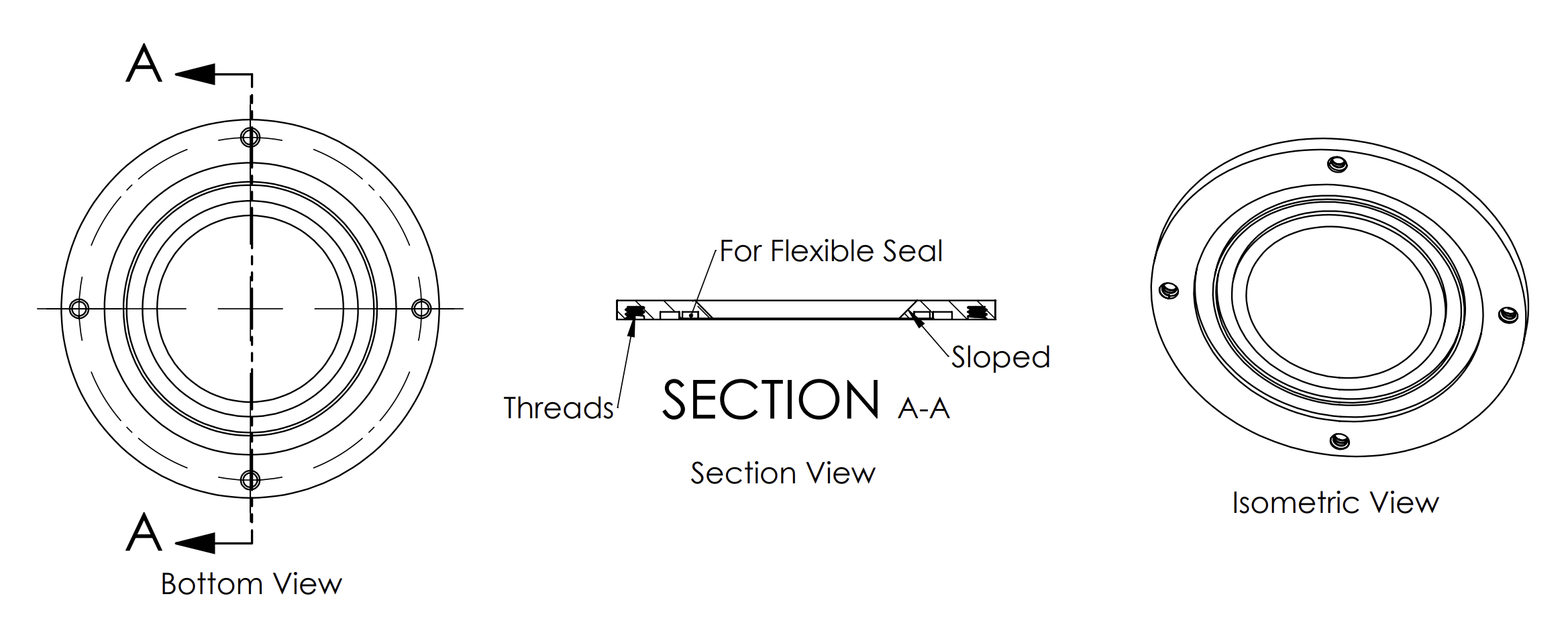SLAAEK6 June 2024 ULC1001 , ULC1001-Q1
3.4.5.1 Housing Cap
The cap contains a trench to hold the seal in place and provides the waterproof. The cap can be designed to have threads and screw onto the housing or a fixed cap and housing assembly can be designed. Figure 3-10 shows the top view and section view of the housing cap. A slope is recommended on the opening of the cap to increase the field of view and also the waterdroplet can roll off along the slope.
Material: The cap material must be strong and durable for the application. TI has used Delrin Acetal Homopolymer Black for prototyping.
 Figure 3-10 Housing Cap: Top View and
Section View
Figure 3-10 Housing Cap: Top View and
Section View